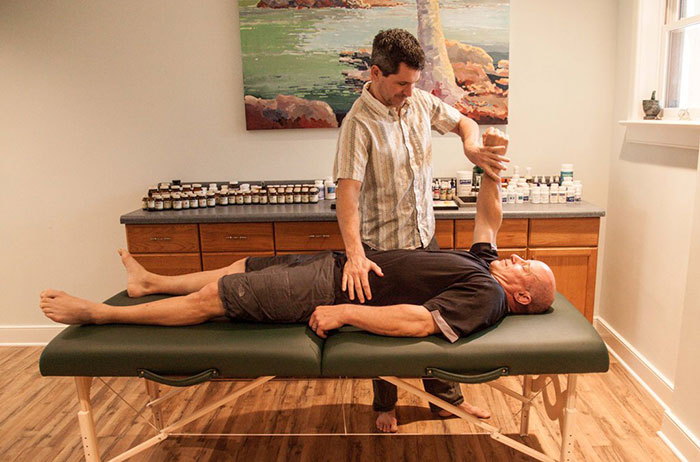What is Applied Kinesiology?
Applied Kinesiology is a diagnostic system for evaluation of the structural, chemical and emotional aspects of health. Used along with a standard exam, applied kinesiology is a functional assessment of the body. Skilled applied kinesiologists treat patients based on their subjective, objective and functional findings. While treatment methods vary, they typically use a combination of joint manipulation, myofascial release, trigger point therapy, acupuncture, cranial and SOT techniques, clinical nutrition, and specific exercises to help patients heal.
How is muscle testing used in Applied Kinesiology?
Manual muscle testing a form of biofeedback. It assesses an output–motor function–in response to an input. The inputs range from changes in movement patterns (which change sensory input to the brain) to doctor performed “challenges.” A practitioner may use mechanical pressure, movement, reflexes, or Traditional Chinese meridian points to see how the body’s responds to different types of input. Because changes in sensory input to the nervous system change the motor output, we can assess how the system is functioning. Muscle testing, done correctly, is assessing the neuron pool in the front of the spinal cord. These neurons become inhibited, facilitated, or hyper-facilitated in response to changing stimuli. By using muscle testing, we get real-time assessment of the body’s function and see if the nervous system is responding normally or abnormally.
A professional applied kinesiology (PAK) practitioner uses the results of manual muscle testing in conjunction with their patient history, orthopedic, neurologic, and lab testing to diagnose the source of the patient’s problem. Muscle testing also provides a real-time assessment of treatment outcomes. Using manual muscle testing without other diagnostics is not full evaluation of the patient.
While most people are familiar with muscle testing in the form of an arm pull-down test, this is not Applied Kinesiology. Both practitioners and laypeople use these types of testing to diagnose health issues. This type of testing oversimplifies the body’s response and, in my opinion, takes away from the diagnostic process. In the words of Stephen Gangemi, The Sock Doc:
“Muscle testing is an art – knowing what the muscle response (or lack thereof) indicates, is the science.”
Results from this type of testing should be consistent with patient history and their biomechanical, biochemical and neurological findings. The specific system of Applied Kinesiology that I use is Systems Health Care. Systems Health Care takes a systemic approach to assessment of the fascial, muscular, neurological and biochemical function of the body. As a result I find that the improvement last longer because we address all the contributing factors.
Applied Kinesiology vs. Kinesiology
While Applied Kinesiology sounds similar to kinesiology, they are not the same discipline. Kinesiology is the study of body movement. There are a number of kinesiology-based techniques in healthcare, but kinesiology often focuses more on biomechanical observation. The International College of Applied Kinesiology (ICAK) defines and oversees the practice of Professional Applied Kinesiology. Trained applied kinesiologists are professionals that include chiropractors, medical doctors, osteopaths, dentists, and several other disciplines. According to the ICAK, using a single general muscle test or observing motion without further examination is improper use of applied kinesiology. If you’d like more information, articles from peer-reviewed journals are available on the ICAK website.
Because the use of applied kinesiology in our office produces better results over time, we manually muscle test as part of our diagnostic process. We think Indianapolis could use a little more functional testing! If you have more questions as to how we approach patients, check out our blog or contact us.
